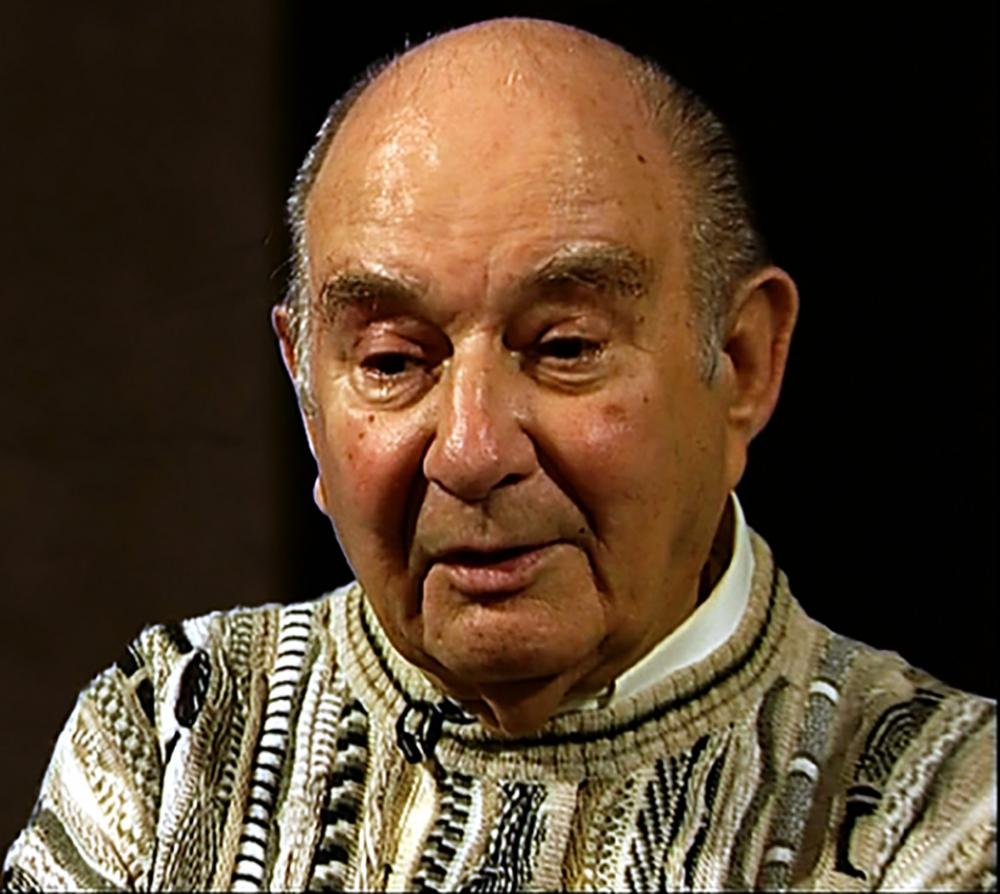שלמה בן לאזאר
Stanley Glogover
Aug 10, 2013 ד' אלול תשע"ג

Twice during the Shoah, he escaped death. The first time was when he was chosen to be among local Jews to be hanged in retribution for some act of sabotage. The second was when he was subjected to a horrific and inhumane surgical “experiment” by the “Angel of Death” himself, Dr. Josef Mengele. In the first instance, a bribe to a local official saved Stanley. In the second, it was the compassion of a Polish orderly, Bruno, who hid Mengele’s near-death victim and nursed him back to health.
When Stanley was strong enough, Bruno used his clout among the prisoners to get Stanley a “cushy” job, greeting the newcomers and taking their possessions. As part of that crew, he often grabbed babies from their mothers and handed them to older women, explaining that these sadists would kill mother and child, but an unencumbered young woman might be spared. Some mothers took their children back and died with them; others accepted Stanley’s strategy.
When the Holocaust Museum opened in Washington, D.C., it prominently featured the one extant photograph of this gory receiving line at Auschwitz. Research proved that Stanley was the only one still living among the alumni of that iconic photograph. This resulted in Stanley being flown to D.C. for the opening ceremony, and getting invitations to speak at schools and memorial gatherings.
After the war, he searched for family members who also had survived. When he heard there was a Glogover in a Displaced Persons camp in Bari, Italy, he paid a smuggler to lead him across the border. He had to get down a snowy mountain, despite his fear of heights. He could not look downward without getting queasy, so he literally rolled down the mountainside. It took him an entire night.
In Italy, he was arrested and brought before the nearest magistrate. When he explained his predicament, the judge gave him a document allowing him not only to travel freely through Italy, but to travel for free!
After an adventurous train ride, Stanley arrived at the DP camp and was directed to where “Mr. Glogover” could be found. In a medical office, sitting behind a desk, was Stanley’s father, whom he had believed dead.
In Bari, Stanley recovered his health quickly.
He had been a member of Betar Youth before the war, so now he got involved in the illegal smuggling of Jews to Israel by Betar and Irgun under the British blockade.
Stanley and his father arrived in the United States in 1947. Once in New York City, Stanley enrolled at the Fashion Institute. He was so intensely motivated to succeed that he was the first student ever to complete the three-year curriculum in one year. He showed so much ability, they asked him to stay on and teach, which he did for a few years.
Afterwards, he became a legend in the fashion world, with designs and inventions galore. Among his patents were the first prototypes of the nursing bra and the maternity bra.
Stanley eventually settled in South Florida for a comfortable retirement. He often spoke to the younger generation, testifying to the horror lest the world forget. He made a film of his experiences for the archives of Steven Spielberg’s foundation. He led a beautiful life and he gave people the dignity of beautiful clothing, as his revenge against an indecent regime that stripped humanity of that precious dignity.
He and his wife Joanie had three children—Philip, Annette, and Bonnie, and daughter-in-law Norma.
May his memory be a blessing.
(Edited from a longer obituary published in The American Spectator.)